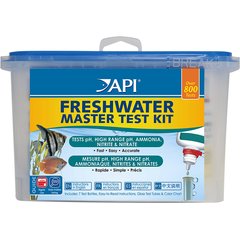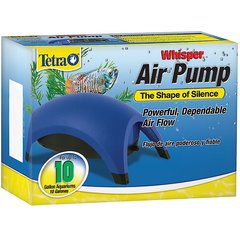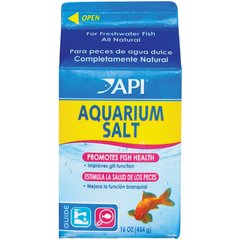8 Tropical Fish for Your Saltwater Tank
Starting a Saltwater Fish Tank
By Adam Denish, DVM
If you find yourself in the saltwater section of your local pet store, the beautiful colors and intriguing behaviors of the fish might just lure you in. If you are starting a saltwater fish tank, you will need to decide what kinds of inhabitants you would like to include and how many. Options include a fish-only community tank, a single species tank, or a coral reef system.
Our aspiration as fish parents is to be able to create an underwater world in which our selected fish can easily adapt and flourish. Fish that have been captive-bred or tank-raised will more readily adjust to living under the constraints of an aquarium. Research the kind of aquatic environment you would like to create and consider your available budget, space, and time commitment to dedicate to the hobby before making your choice.
The Special Needs of Saltwater Fish
Similar to freshwater fish, saltwater fish have special needs based on the ecosystem from where they originate. While there are many species of saltwater fish that will fare well in a community tank, some fish like seahorses should be kept in a single species aquarium. The coral reef system is the most demanding as the corals have specific lighting requirements, water flow requirements, and additional water chemistry needs. Larger tanks tend to handle water fluctuations better than smaller tanks.
The following fish are recommended for a saltwater tank that is 30-gallons or larger. Most of these fish are appropriate for a community, fish-only tank. Those that are also suitable for a coral reef system are noted with an asterisk (*). Others may be added to a reef system, but be aware that these fish may nip at the corals.
These selections are hardy, inexpensive, and can acclimate easily to the home aquarium.
8 Tropical Fish for Your Saltwater Tank
 API Freshwater Aquarium Master Test Kit, 800 countRated 4.7 out of 5 stars239Reviews$33.29Chewy Price
API Freshwater Aquarium Master Test Kit, 800 countRated 4.7 out of 5 stars239Reviews$33.29Chewy Price API Tap Water Conditioner, 16-fl oz bottleRated 4.8 out of 5 stars329Reviews$8.45Chewy Price
API Tap Water Conditioner, 16-fl oz bottleRated 4.8 out of 5 stars329Reviews$8.45Chewy Price Tetra Whisper Non-UL Air Pump for Aquariums, Size 010Rated 4.5 out of 5 stars312Reviews$6.40Chewy Price
Tetra Whisper Non-UL Air Pump for Aquariums, Size 010Rated 4.5 out of 5 stars312Reviews$6.40Chewy Price API Freshwater Aquarium Salt, 16-oz cartonRated 4.7 out of 5 stars200Reviews$5.98Chewy Price
API Freshwater Aquarium Salt, 16-oz cartonRated 4.7 out of 5 stars200Reviews$5.98Chewy Price
Damselfish and Chromis*
These closely related groups of fish are recommended for new saltwater aquariums because they are tolerant of the fluctuations that can occur in new tanks. Damsels and chromis are also easy to feed as they readily adapt to taking dry flake food.
These fish grow to about 2-inches or less and are very active swimmers, requiring lots of open space. While they can be kept in groups, be aware that damselfish are very territorial and can be aggressive toward other fish. Create small nooks for hiding in the rockwork.
Species to try: Green chromis (Chromis viridis) and Talbot’s damselfish (Chrysiptera talboti).
Dwarf Angelfish
Dwarf angels come in beautiful colors and bold patterns, and while angelfish can grow quite large, dwarf angels are appropriately sized for most beginners. These fish show a range in aggressive behavior, however, so be sure to research before you buy. In most cases, it is probably best to keep only one of a particular species of dwarf angels.
Species to try: Coral beauty (Centropyge bispinosa) and Eibl’s Angelfish (Centropyge eibli).
Cardinalfish*
Cardinalfish are more interesting than they might first appear. Cardinals are mouthbreeders, meaning the male carries the eggs in his mouth and will not eat for weeks while carrying the eggs. Quite often the eggs are eaten by the cardinalfish themselves, or by other fish.
Cardinal fish tend to become more active when the lights in the aquarium are off.
Species to try: Banggai cardinalfish (Pterapogon kauderni) and Pajama cardinalfish (Sphaeramia nematoptera).
Goby*
In general, gobies are small, linear fish that spend most of their time at the bottom of the tank in small crevices. They peek out to look for food and then retract when another fish swims close by. Some gobies form a symbiotic relationship with invertebrates like shrimp and will share a burrow where the two will act as “lookouts” for each other.
Gobies come in a variety of colors, some changing color and pattern from juvenile to adult.
Species to try: Yellow Watchman Goby (Cryptocentrus cinctus) and Randall’s Goby (Amblyeleotris randalli).
Dartfish*
Dartfish are a nice addition to the saltwater aquarium for their bright, fluorescent colors. They are related to gobies but they swim in the middle tier of the tank rather than hide out in crevices. Dartfish are quite active and can become aggressive with others, so keep only one dartfish per 30-gallons of water.
Species to try: Purple Dartfish (Nemateleotris decora) and Firefish (Nemateleotris magnifica).
Hawkfish
Hawkfish appear to fly through the tank and then perch on a rock. They enjoy finding a spot high in the tank where they can watch all the action below.
Hawkfish are carnivores and will snap up meals at feeding time. They are not known to be aggressive, however. They tend to stay solitary and do not interact much with the other fish. Being carnivorous, they do eat frozen shrimp, but they are not predatory in the aquarium. Still, they may bother crustaceans if they are not getting enough food. To be safe, hawkfish are not recommended for tanks with ornamental shrimp or other invertebrates.
Species to try: Longnose hawkfish (Oxycirrhites typus) and Falco hawkfish (Cirrhitichthys falco).
Dottyback*
These attractively colored fish have big personalities. They are active swimmers and they can jump, so be sure to cover the top of your tank with a secure lid. Dottybacks are carnivorous fish that can be aggressive with others; be sure your tank has lots of hiding places for the other fish.
These fish are hardy and are becoming more available as a captive-bred fish.
Species to try: Orchid dottyback (Pseudochromis fridmani) and Bicolor dottyback (Pictichromis paccagnellae).